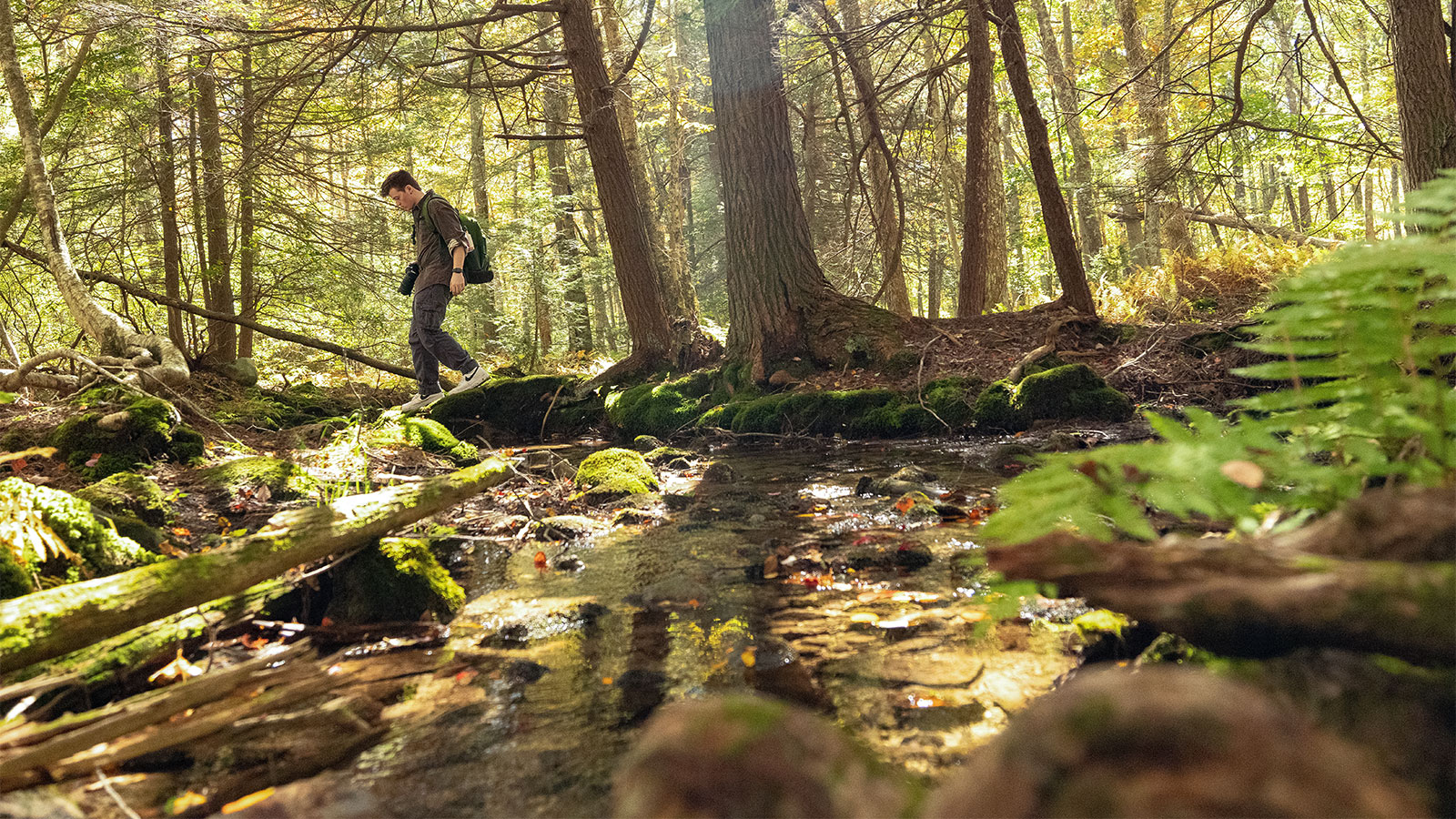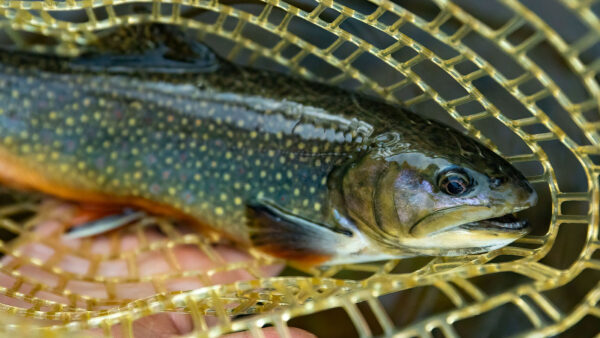DiscoverNEPA is all about celebrating Northeastern Pennsylvania’s abundant and vibrant natural spaces. We want you to get outside, relax and unwind in the mountain air, among the towering trees, along the crystal-clear lakes and streams. We just want to make sure everyone enjoys these places safely and respectfully.
That’s why we’re teaming up with state agencies, local conservation authorities and outdoor enthusiasts to bring you expert advice, tips and so much more to help you enjoy NEPA’s great outdoors.
Preparation and Vigilance Vital to Avoiding Ticks in the Wild

What are they? Where do they come from? And why do they want my blood?
Tis the season yet again! Sun! Sky! Walks! Hiking! Camping! Canoeing! Fishing! Aaaaaaand blood-sucking, disease-riddled fiends who lie in wait ready to latch on to you when you least expect it. Sorry in advance to everyone who is reaching for their vampire hunting kits. Unfortunately we’re talking about ticks. Yes, these tiny parasitic monsters can be a bit scary. Keeping them at bay, however, is a fairly manageable task.
It is probably worthwhile to take a moment to talk about just what a tick actually is. Ticks are eight-legged arachnids, like spiders and scorpions. They compose a subclass called “Acari” along with several groups of mites. Ticks have four life stages — egg, larvae, nymph and adult. Larvae and nymphs generally feed on smaller animals. Adults tend to feed on larger hosts, including us humans.
Nymphs and adults have a characteristic shape that is reminiscent of a pumpkin seed. The larvae are more rounded (and also only have six legs). Their pointed heads consist of two large palps (“feelers” for holding and manipulating) and a beak which is the structure that they actually inject into a host to draw out blood. The beak is often covered in backward-facing barbs. This makes it very difficult to remove the tick once it has latched on. Both male and female ticks will bite, but only the females will blood feed and become engorged. At that point, they take on the appearance of a pale grey grape, about the size of a dime.

So… Do ticks actually serve a purpose?
Now that we’re all nice and hungry for a healthy snack of grapes and pumpkin seeds, the obvious question is likely somewhere on the lines of “Why are ticks important?” Ticks serve as a food source for a variety of other animals including ants, spiders, birds, and small mammals and reptiles. They can also serve as indicators of ecosystem health. Because ticks commonly latch on to small animals, a decrease in the tick population is indicative of a healthy population of predators eating said small animals. More predators leads to fewer prey items and fewer ticks! This also works in reverse, a sudden increase in the tick population indicates a booming prey population and a reduced predator population that would normally be keeping them in check.

There’s danger beyond the bite.
The bigger concern for humans is, of course, when ticks attack us! Besides the gross factor of having a parasite making a meal out of your blood, there is concern over tick’s vectoring (spreading) a variety of diseases. While there is a decent variety of ticks that will attach to humans, there four that are the most prevalent: the Gulf coast tick (Amblyomma maculatum), the American dog tick (Dermacentor variabilis), the lone star tick (Amblyomma americanum), and the deer tick (Ixodes scapularis), which is also known as the black-legged tick. Gulf coast and American dog ticks can vector spotted fever, lone star ticks can vector ehrlichiosis, and deer ticks are arguably the king vectors, spreading anaplasmosis, babesiosis, and Lyme disease.

ALWAYS do a tick check on yourself, your children and your pets after venturing outdoors.
If you, your child or your pet do get bitten by a tick, it can be removed at home with a pair of tweezers. Just make sure to get as close to the head as possible (some ticks will burrow into the skin, so it may not be possible to get right up to the head). Once grasped, pull straight out with gentle pressure, making sure not to jerk or twist. Doing so may result in the tick’s head remaining embedded in your skin. A leftover head increases the risk of infection and should be removed, if possible, with a sterilized pair of fine-tipped tweezers and/or a sterilized needle. Once removed, do not dispose of the tick, keep it in a sealed bag or container to show to a healthcare professional. This is often helpful in identifying the species and allows for more appropriate and specific care.
If you are not confident in your ability to remove a tick yourself, then you should get to a healthcare professional as soon as possible. You should also consider contacting a healthcare professional if you suspect that the tick has been on you for an extended period of time (greater than several hours). It’s also recommended to seek the help of healthcare professionals If you develop a rash at the bite site or elsewhere on your body, or if you develop flu-like symptoms.

Preparation is your best defense against ticks.
You aren’t guaranteed to develop an illness if you get bitten by a tick, but it’s still nothing to gamble over. The best course of action is always to take precautions to prevent bites if you plan on being outdoors. Ticks don’t actively pursue hosts, they sit and wait for one to come to them. Common places where they may be lurking are tall grass and leaf litter. While it’s not impossible to spot them creeping, it’s not always going to be easy. Here are a few tips for keeping those tricky ticks out of your way:
- Keep grass trimmed and remove leaf piles from your property to reduce risks at home.
- While outdoors, avoid areas where ticks are known to hide – high grass, overgrown trails, etc.
- Create a physical barrier to prevent their intrusion — consider wearing long pants and sleeves/if possible, tuck your pant legs into your socks or shoes.
- Insect repellants that contain 20-30% DEET are also effective for keeping ticks away.
- Tick Checks — make it part of your routine after spending time outdoors. It only takes a couple minutes, and it can make a big difference!
- Ticks can attach nearly anywhere, but some hotspots include: below the beltline, your back, underarms, hair, and behind the ears.
- Check Pets – Common areas where ticks attach to pets include: around ears and eyelids, under collars, under and between front and back legs, between toes, around the tail.

Ticks are out there. Be aware. Be prepared. Be ready to check. But don’t be afraid.
Bottom line, don’t let a fear of ticks prevent you from seeing all that our wonderful region has to offer! You should absolutely go out and enjoy NEPA’s incredible parks and natural spaces. Just take precautionary measures for yourself, your little ones and your furry friends.


















